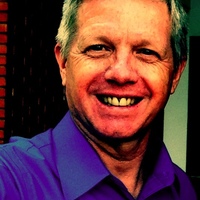Brian Migliazza
SIL International, Asia Language Program Services, Faculty Member
- Discourse, Language Documentation, Corpus Linguistics, Southeast Asian Linguistics, Sino-Tibetan Linguistics, Lexicography, and 14 moreTai-Kadai Linguistics, Translation Studies, Austro-Asiatic Linguistics, Text Linguistics, Fieldwork in linguistics, Languages and Linguistics, Mon-Khmer linguistics, Katuic languges, Expressives, Idiomatic Phrases, Linguistics, History of the Polish Translation of the Bible, Early Bible Translations, and Bible Translationedit
This is an "in memoriam" for Thomas M. Tehan (1949-2019)
Research Interests: Na and In Memoriam
Research Interests:
Ethnologue > SIL Bibliography > So stories: a preliminary analysis of texts in a Mon-Khmer language So stories: a preliminary analysis of texts in a Mon-Khmer language. Citation, Migliazza,Brian. 2003. ... Author, Migliazza, Brian.... more
Ethnologue > SIL Bibliography > So stories: a preliminary analysis of texts in a Mon-Khmer language So stories: a preliminary analysis of texts in a Mon-Khmer language. Citation, Migliazza,Brian. 2003. ... Author, Migliazza, Brian. Serial, Mon-Khmer Studies [indexed serial name]. ...
Research Interests:
This is an "in memoriam" for Thomas M. Tehan (1951-2019).
The So people are a minority people group currently living mainly in northeastern Thailand and in central Laos. In Thailand most of the estimated So population of 35,000 live in Sakon Nakhon and Nakhon Phanom provinces. Approximately... more
The So people are a minority people group currently living mainly in northeastern Thailand and in central Laos. In Thailand most of the estimated So population of 35,000 live in Sakon Nakhon and Nakhon Phanom provinces. Approximately another 100,000 So people live in the central Lao provinces of Khammouan and Savannakhet. The So usually refer to themselves as /lakṳɤу thrɔː / “people So”, i.e., “the So people”. The So use this term to distinguish themselves from other language groups, though there are some speakers of the So language in Laos who go by the larger ethnic group name “Bru”. In Thai they are called ไทยโซã/thaу sô/. Sometimes they are called “Bru”, in an ethnic sense, when they are lumped together with their neighbors living in nearby provinces. There are various Bru dialects living in Mukdahan, the next province south of Sakon Nakhon. Other references lump the So together with all minority peoples called /khaː/, a word that may also have come from Lao, meaning “slave ” (G...
SIL bibliography listing for Autonomous syntactic tiers.
Research Interests:
Research Interests:
La presenza di espressivi (ideofoni) è ampiamente attestata in molte lingue del mondo. Mentre in alcune aree linguistiche sono stati sufficientemente studiati, nelle lingue asiatiche questo fenomeno non è ancora ben documentato.... more
La presenza di espressivi (ideofoni) è ampiamente attestata in molte lingue del mondo. Mentre in alcune aree linguistiche sono stati sufficientemente studiati, nelle lingue asiatiche questo fenomeno non è ancora ben documentato. L'articolo, dopo averci presentato i So della Thailandia e averci introdotto alla fonologia della loro lingua, ci fornisce vari esempi di espressivi usati da questo popolo, dandocene una semplice classificazione. Un breve lavoro che può contribuire ad uno studio comparato degli espressivi nelle lingue asiatiche.
Research Interests:
JSEALS Journal of the Southeast Asian Linguistics Society Paul Sidwell, Managing Editor Mark Alves, Executive Editor this edition Editorial Advisory Board George Bedell (Thailand) Gerard Diffloth (Cambodia) Marlys Macken (USA) Brian... more
JSEALS Journal of the Southeast Asian Linguistics Society Paul Sidwell, Managing Editor Mark Alves, Executive Editor this edition Editorial Advisory Board George Bedell (Thailand) Gerard Diffloth (Cambodia) Marlys Macken (USA) Brian Migliazza (USA) Keralapura Nagaraja (India) Amara Prasithrathsint (Thailand) Martha Ratliff (USA) Sophana Srichampa (Thailand) Uri Tadmor (Indonesia) Justin Watkins (UK) JSEALS is the peer-reviewed journal of the Southeast Asian Linguistics Society, and is devoted to publishing research on the languages of ...
